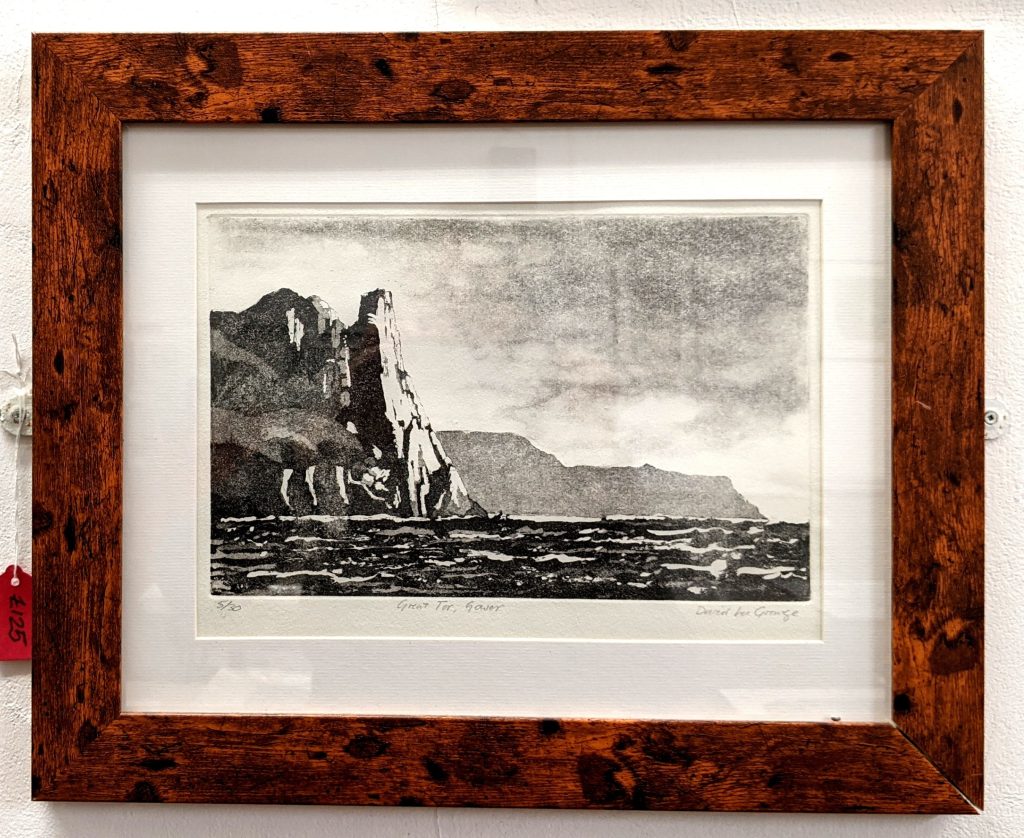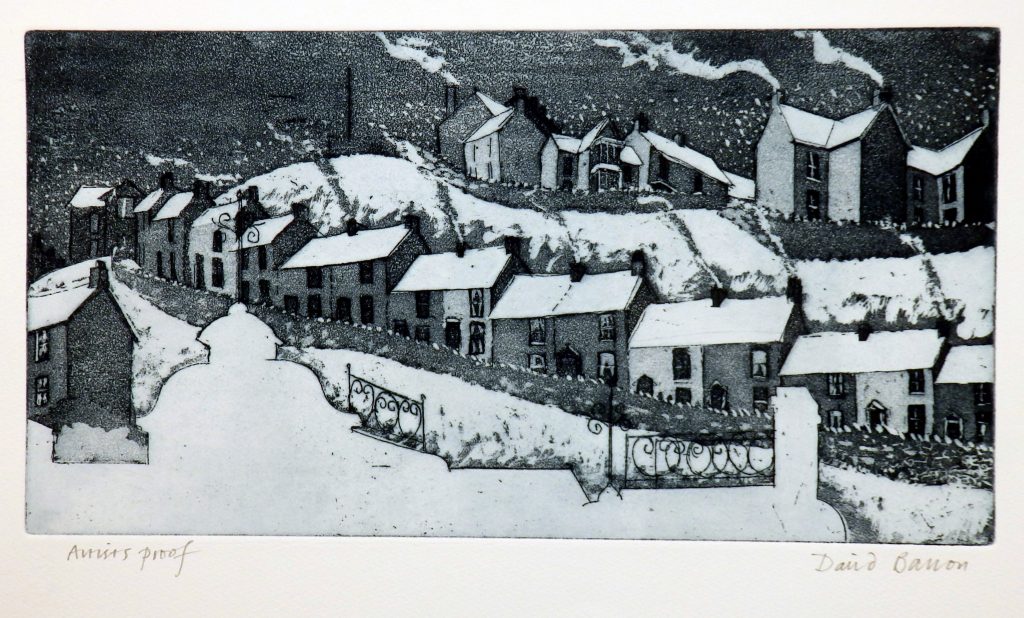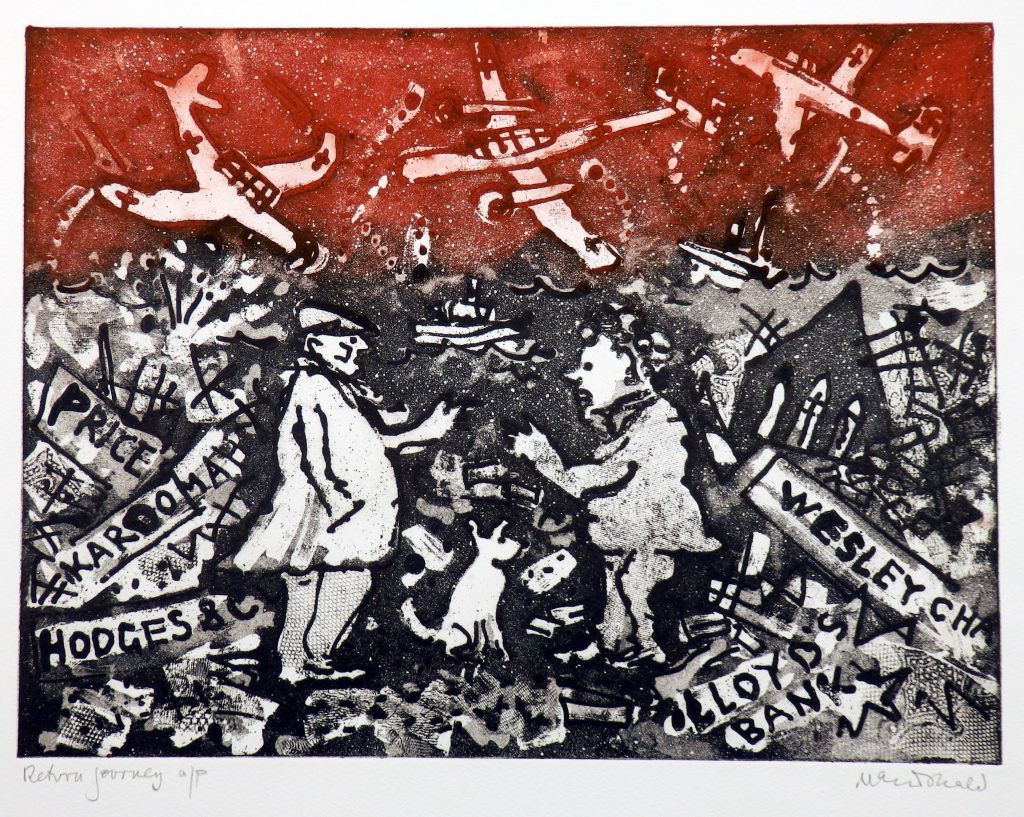
David La Grange | Great Tor, Gower, etching and aquatint | £125.00 framed | £100 unframed
Aquatint is a process for simulating a range of tones on an etching plate. This is done by applying fine particles of an acid resist material. The tones produced become increasingly dark the longer the plate is bitten. Selected areas can be stopped out in between each ‘bite’, giving the artist a range of tones to design with.
Traditional aquatint requires the application of a fine layer of dusted acid-resistant material (powdered rosin) secured to the plate by heat. This is a method that presents a number of health and safety hazards to the etcher.

The aquatint ground, covering, is made up of minute dots of varnish or paint which are sprayed onto the plate. The metal of the plate is exposed to the action of the acid and minute ink holding pockets are etched between the dots of varnish. This enables areas of tone to be created, the longer the plate is etched in the acid the deeper the pockets and the darker the tone produced. The plate can be bitten in steps allowing a range of tones from light grey through to a rich black.
An aquatint ground applied with an airbrush supports allows for greater creativity and control at this stage. The plate can be selectively sprayed and ‘drawn’ on with the airbrush.
Aquatint is often used in conjunction with other etching techniques such as hard ground, softground and sugarlift.

